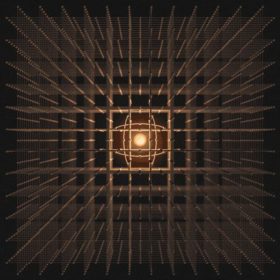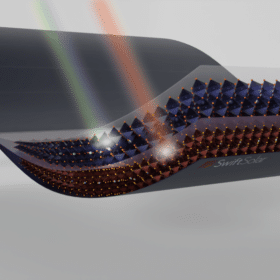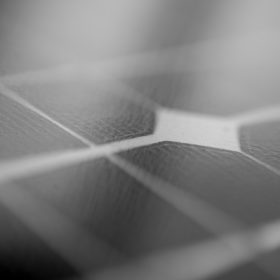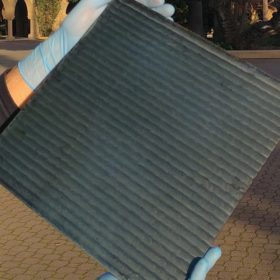The state of the art in perovskite tandems
A new paper from scientists in China and Canada examines the recent progress in the development of perovskite-silicon tandem cells, finding a technology that’s poised for rapid commercialization, with a few research challenges still to overcome. These are primarily related to ensuring the perovskite layer can match the lifetime of the silicon cell underneath.
Stanford scientists gain insight on polaron distortion in perovskite solar cells
Polaron formation in perovskite solar cells has been indicated in scientific research as a possible factor for making this kind of cell particularly efficient, although the mechanism behind polarons’ action is completely unknown. A U.S. research group has now observed how polaron distortions form and grow.
Oxford PV retakes tandem cell efficiency record
Perovskite developer Oxford PV has set a new world record for perovskite-silicon tandem cell efficiency at 29.52%, edging out the previous record set less than a year ago by Helmholtz Zentrum Berlin. The new record has been certified by the U.S. National Renewable Energy Laboratory.
Swift Solar secures financing to expand perovskite R&D
The financing round was led by GitLab CEO Sid Sijbrandij and cryptocurrency expert James Fickel. The company will use the proceeds to expand R&D, develop prototypes and add staff.
Global research team sets up database for emerging PV tech
An international research team has set up a new database with crucial data on emerging technologies for perovskite, organic, and dye-sensitized solar cells. The platform also includes information on the best flexible solar cells.
Low-cost organic pigment coating for 21.1%-efficient perovskite solar cell
Scientists in the United States have conceived a new process to apply a low-cost organic pigment to perovskite solar cells. The new technique is claimed to increase the efficiency of the devices by around 1.2% and also to improve the cells’ stability.
India and Israel to work together on perovskite solar cells and lithium sulfur batteries
Low-cost batteries and novel perovskite materials are among the topics selected for joint research and development.
New manufacturing process for 15.5% efficient perovskite solar panels
Stanford scientists have used a robotic device with two nozzles to quickly produce thin films of perovskite. With these films, they have manufactured perovskite cells and modules with efficiencies of 18% and 15.5%, respectively. According to them, this technique may enable the production of perovskite modules at a cost of around $0.25 per square foot.
25.17% efficient perovskite solar cell via new photoactive layer
Scientists in South Korea demonstrated a perovskite cell with a certified efficiency of 24.4%. The device is claimed to maintain over 80% of its initial efficiency after 1,300 hours in the dark at 85 degrees Celsius.
US start-up pursues roll-to-roll printing of perovskite on flexible glass
A Rochester-based firm aims to print perovskite and other PV layers on a flexible glass substrate using a roll-to-roll machine Kodak has used to produce photographic film.









